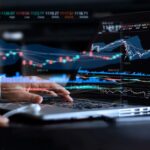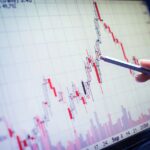Precious metals are a class of rare and valuable elements, including gold, silver, platinum, and palladium. They have been sought after for their rarity, beauty, and practical uses in various industries, such as electronics, jewelry, and finance.
Historically, they have been used as a store of value and a hedge against currency inflation and market volatility. Today, precious metals continue to play an important role in modern finance, with many investors considering them as a way to diversify their portfolios and potentially generate higher returns.
Why Precious Metals are Important for Financial Markets?
Precious metals are considered to be some of the most valuable assets in the financial markets and finance industry. They are characterized by their rarity, physical characteristics, and widespread use in various industries. The main precious metals include gold, silver, platinum, and palladium. They play an important role in the financial industry due to their ability to act as a store of value, a form of currency, and a hedge against inflation and economic uncertainty. The value of precious metals often moves in opposition to other asset classes such as stocks and bonds, which makes them a valuable tool for portfolio diversification.
The most traded precious metals in the financial markets
Gold: Gold is the most widely traded precious metal in the world, as it is considered a safe-haven asset and a store of value. Investors often buy gold as a hedge against inflation and currency fluctuations.
Silver: Silver is the second most traded precious metal in the financial markets. It is often considered
a more volatile alternative to gold, but it also offers the potential for higher returns.
Platinum: Platinum is a rare precious metal that is primarily used in the production of jewelry,
catalytic converters for vehicles, and other industrial applications. It is less commonly traded than
gold or silver, but it offers the potential for substantial price movements due to its scarcity and
industrial demand.
Palladium: Palladium is a rare precious metal used in the production of catalytic converters for
vehicles, electronic components, and other industrial applications. Like platinum, palladium is less
commonly traded than gold or silver, but it offers the potential for price movements due to its
scarcity and industrial demand.
Precious metals trading strategies
Precious metals trading is a popular investment choice for many investors looking for a hedge against
inflation or a store of value. There are various strategies that traders can use when investing in
precious metals, such as buying physical metals, investing in ETFs or mutual funds, or trading futures
and options. Some popular strategies include dollar-cost averaging, value investing, and momentum
trading. It is important to consider your investment goals and risk tolerance when choosing a
precious metals trading strategy.
Investing in gold and silver
Gold and silver are the two most popular precious metals traded in the financial markets. Investing in
these metals can provide investors with a hedge against inflation, currency fluctuations, and
economic uncertainty. There are several ways to invest in gold and silver, including buying physical bullion, investing in ETFs or mutual funds, and trading futures and options. It is important to consider
factors such as market conditions, geopolitical events, and supply and demand when investing in
gold and silver.
Platinum trading for beginners
Platinum is a rare precious metal with a wide range of industrial uses, making it a popular choice for
investors seeking exposure to the precious metals market. Trading platinum can be a complex
process, and it is important for beginners to have a basic understanding of the market and the
factors that can impact platinum prices. Some key considerations for beginners trading platinum
include market conditions, supply and demand dynamics, and geopolitical events.
Palladium investment opportunities
Palladium is a rare precious metal with a wide range of industrial uses, making it a popular
investment choice for those seeking exposure to the precious metals market. Palladium prices can be
influenced by factors such as supply and demand dynamics, geopolitical events, and economic
conditions. Investors can gain exposure to palladium through various investment vehicles, including
ETFs, mutual funds, and futures contracts. It is important to consider the risks and rewards
associated with investing in palladium when making investment decisions.
Online precious metals trading platform
Trading precious metals online is a convenient and efficient way for investors to gain exposure to the
precious metals market. With an online trading platform, investors can easily buy and sell precious
metals from the comfort of their own homes. It is important to choose a reputable and secure online
trading platform, as well as to consider factors such as fees, security measures, and the platform’s
track record.
How to trade gold and silver futures
Trading futures contracts on gold and silver can provide investors with a way to gain exposure to the
precious metals market while leveraging their investments. It is important to have a basic
understanding of the futures market and the factors that can impact gold and silver prices, such as
supply and demand dynamics, geopolitical events, and economic conditions. When trading gold and
silver futures, it is important to consider the risks and rewards associated with leveraged
investments.
Silver investing vs gold investing
Both silver and gold are popular precious metals that are widely traded in the financial markets.
While both metals can provide investors with a hedge against inflation, currency fluctuations, and
economic uncertainty, there are some key differences between the two. Silver is often considered a
more volatile alternative to gold, but it also offers the potential for higher returns. When deciding
between silver and gold investing, it is important to consider your investment goals, risk tolerance,
and market conditions.
Physical precious metals versus paper assets
Physical precious metals and paper assets are two different forms of investing in precious metals.
Physical precious metals refer to tangible assets such as gold bars, coins, or silver bullions, which can
be stored and physically owned by the investor. On the other hand, paper assets are financial
instruments such as exchange-traded funds (ETFs) or mining stocks that are backed by physical
precious metals.
The choice between physical and paper assets largely depends on the investment objectives and
personal preferences of the investor. Some may prefer physical assets for the security and peace of
mind that comes with owning tangible assets, while others may prefer paper assets for the ease of
trading and potential for higher returns. It’s important for investors to carefully consider their
options and understand the potential risks and benefits before making a decision on their precious
metals investment strategy.
Risks and rewards of precious metals trading
Trading in precious metals, like any other type of investment, carries both risks and rewards. On the
one hand, precious metals have a long history of being a safe haven asset, often maintaining their
value during times of economic uncertainty and market volatility. This can provide a hedge against
inflation and a means of diversifying a portfolio.
On the other hand, the prices of precious metals can also be highly volatile, and the market is subject
to supply and demand factors, geopolitical events, and economic conditions that can impact their
value. Additionally, there is always the risk of fraud when investing in precious metals, especially in
the form of counterfeit products.
It’s important for investors to understand these risks and weigh them against the potential rewards
before making a decision to trade in precious metals. A well-informed, diversified, and balanced
investment strategy can help mitigate the risks and maximize the potential rewards of precious
metals trading.
As with any investment, it’s crucial to conduct thorough research, understand market conditions, and
regularly monitor the performance of your investments to make informed decisions. Seeking the
advice of a financial professional may also be helpful in creating a comprehensive precious metals
trading strategy that aligns with your investment goals.
Precious Metals and their instrument codes in the market
| Precious Metal | Trading Code |
| Gold | XAU/USD or XAUUSD |
| Silver | XAG/USD or XAGUSD |
| Platinum | XPT/USD or XPTUSD |
| Pallladium | XPD/USD or XPDUSD |
| Copper | COPPER or COPPER.CMD/USD |
Precious metals price correlation with other asset classes
Precious metals prices have a tendency to be correlated with other asset classes, meaning that the
prices of precious metals tend to move in the same direction as other types of financial assets, such
as stocks, bonds, or commodities. This correlation is often driven by macroeconomic factors, such as
changes in interest rates, inflation, and economic growth. For example, during times of economic
uncertainty or recession, precious metal prices tend to increase as investors flock to these assets as a
safe haven.
On the other hand, during periods of economic growth and low inflation, precious metal prices may
decline as investors shift their investments towards riskier assets that offer higher returns.
It is important for investors to understand the correlations between precious metals and other asset
classes in order to make informed investment decisions. For example, if an investor has a diversified
portfolio that includes both precious metals and stocks, they may want to consider the relationship
between these two asset classes when making changes to their portfolio. If stocks and precious
metals tend to move in opposite directions, then an increase in one may result in a decrease in the
other, affecting the overall value of the portfolio.
By understanding the correlations between different asset classes, investors can make informed
decisions about how to allocate their investments in order to achieve their financial goals.
How can an investor use precious metals as a portfolio diversified
Investors use precious metals as a diversifier in their portfolio to reduce risk and potentially increase
returns. By including precious metals such as gold, silver, and platinum in a portfolio, an investor can
reduce the overall volatility of their investments. This is because precious metals often exhibit low or
negative correlation with other asset classes such as stocks, bonds, and real estate.
During economic turmoil or market downturns, precious metals may hold or increase in value,
offsetting losses in other parts of the portfolio. As a result, investors may find that adding precious
metals to their portfolio can improve risk-adjusted returns.
However, it’s important to remember that precious metals are not a guarantee against losses and
should be used as a complementary part of a well-diversified investment portfolio.
What are the top the trading strategies for precious metals?
Trading precious metals involves strategies that can help investors and traders take advantage of
price movements in these assets. Some of the common strategies are:
- Trend-following strategy: This strategy involves identifying a long-term trend in precious
metal prices and buying or selling accordingly. - Momentum trading: This strategy involves buying precious metals that are rising in price and
selling those that are declining. - Mean reversion: This strategy involves taking advantage of the tendency of precious metal
prices to move back toward their average price over time. - Hedging: This strategy involves using precious metals as a hedge against other investments
to reduce overall portfolio risk. - Dollar-cost averaging: This strategy involves regularly buying a fixed dollar amount of
precious metals to reduce the impact of price fluctuations on overall returns. - Swing trading: This strategy involves buying and holding precious metals for a few days or
weeks to take advantage of short-term price movements. - Scalping: This strategy involves taking advantage of small price movements in precious
metals by buying and selling multiple times in a day.
It is important to note that while these strategies can be effective, they also come with risks and
potential losses. It is always advisable to consult with a financial advisor before making any
investment decisions.
What are the main reasons that affects precious metals prices?
The prices of precious metals, such as gold, silver, and platinum, are influenced by a variety of
factors, including:
- Economic indicators: Economic data releases such as inflation and Gross Domestic Product
(GDP) growth can have a significant impact on precious metals prices as they are often used
as a hedge against inflation and currency weakness. - Interest rates: Changes in interest rates set by central banks can affect the demand for
precious metals. Higher interest rates can - reduce the demand for precious metals, as investors prefer to invest in higher-yielding
assets, while lower interest rates can increase the demand for precious metals as a safe-
haven asset. - Geopolitical events: Conflicts, natural disasters, and political uncertainties can cause market
volatility and increase the demand for precious metals as a safe-haven asset. - Currency fluctuations: The strength or weakness of the US dollar and other currencies can
also impact the price of precious metals, as precious metals are priced in US dollars. - Supply and demand: The supply and demand dynamics of precious metals can also influence
their prices. Any changes in supply due to mine production or changes in demand due to
jewelry fabrication or investment demand can have a significant impact on the price of
precious metals. - Technology trends: The development of new technologies, such as renewable energy, can
also impact the demand for precious metals, as they are often used in the manufacturing of
certain high-tech products. - Market sentiment: The overall mood and perception of the market can also impact precious
metals prices. When investors are optimistic, they tend to invest in riskier assets, reducing
the demand for safe-haven assets such as precious metals. On the other hand, when
investors are uncertain or fearful, they tend to invest in safe-haven assets, increasing the
demand for precious metals.
In which circumstances the prices of precious metals tent to increase?
Prices of precious metals tend to increase in circumstances where there is economic uncertainty,
geopolitical instability, and increasing inflation expectations.
Other factors that can drive up the prices of precious metals include currency devaluation, declining
stock markets, and increased demand for safe haven assets. Additionally, supply disruptions such as
mining strikes, natural disasters, and changes in mining regulations can also lead to price increases.
It’s important to note that precious metals prices are influenced by a complex array of factors, both
fundamental and technical, and that prices can be volatile and unpredictable.
What does trading precious metals as CFD means?
CFD stands for Contracts for Difference, a financial instrument that allows traders to speculate on the
price movements of an underlying asset, such as precious metals, without actually owning the asset.
When trading precious metals as a CFD, a trader enters into a contract with a broker to exchange the
difference in price between the opening and closing of the trade.
Trading precious metals as a CFD is similar to traditional precious metals trading, but it allows traders
to use leverage to trade larger positions, potentially increasing the return on investment. To trade
precious metals as a CFD, a trader first selects the precious metal they want to trade and decides on
the trade size. The trader then chooses the direction they believe the price of the metal will move
and opens a long or short position. The trade is settled with the broker, who acts as the
counterparty, and the profit or loss is calculated based on the difference in price between the
opening and closing of the trade.
What does 1 lot XAUUSD trading means?
A “lot” in XAUUSD trading refers to a standardized unit of measurement for a financial instrument.
The specific definition of a “lot” can vary between different financial markets and brokers, but in
forex trading, a standard lot is typically equal to 100,000 units of the base currency, which in this
case would be ounces of gold (XAU).
The value of a standard lot in XAUUSD would depend on the current exchange rate between the US
dollar and gold. For example, if the XAUUSD exchange rate is 1,800, a standard lot of 100,000 ounces
of gold would be valued at $180,000.
Trading in standard lots allows for more precise risk management, as the amount of exposure to the
market is easier to calculate, but it can also require a higher capital investment.
Large traders and investment companies that trade gold globally
- JPMorgan Chase
- HSBC
- Barclays
- Société Générale
- Goldman Sachs
- BNP Paribas
- Morgan Stanley
- Citigroup
- Deutsche Bank
- UBS
These traders and investment banks are active in the gold market as part of their overall
commodities trading business. They trade gold as part of their risk management strategies, as well as
to take advantage of price movements and market opportunities.
Top 10 countries with the largest gold reserves
Here is the top 10 Countries with the Largest Gold Reserves (in tons)
- United States — 8,133
- Germany — 3,359
- Italy — 2,452
- France — 2,436
- Russia — 2,299
- China — 1,948
- Switzerland — 1,040
- Japan — 846
- India — 754
- Netherlands — 612
F.A.Q
What are the most commonly traded precious metals in the financial markets?
The most commonly traded precious metals in financial markets are gold, silver, platinum, and
palladium.
What factors impact the prices of precious metals?
Factors that impact the prices of precious metals include supply and demand, geopolitical tensions,
and economic conditions.
How can I trade in precious metals?
You can trade in precious metals through exchange-traded funds (ETFs), CFDs, or physical bullion.
How does precious metals trading compare to other investment options?
Precious metals trading has its own unique risks and rewards, and should be evaluated based on your
specific investment goals and risk tolerance.
How do taxes apply to profits from trading in precious metals?
Tax laws on precious metals trading vary by jurisdiction and should be carefully considered as part of
your trading strategy.







